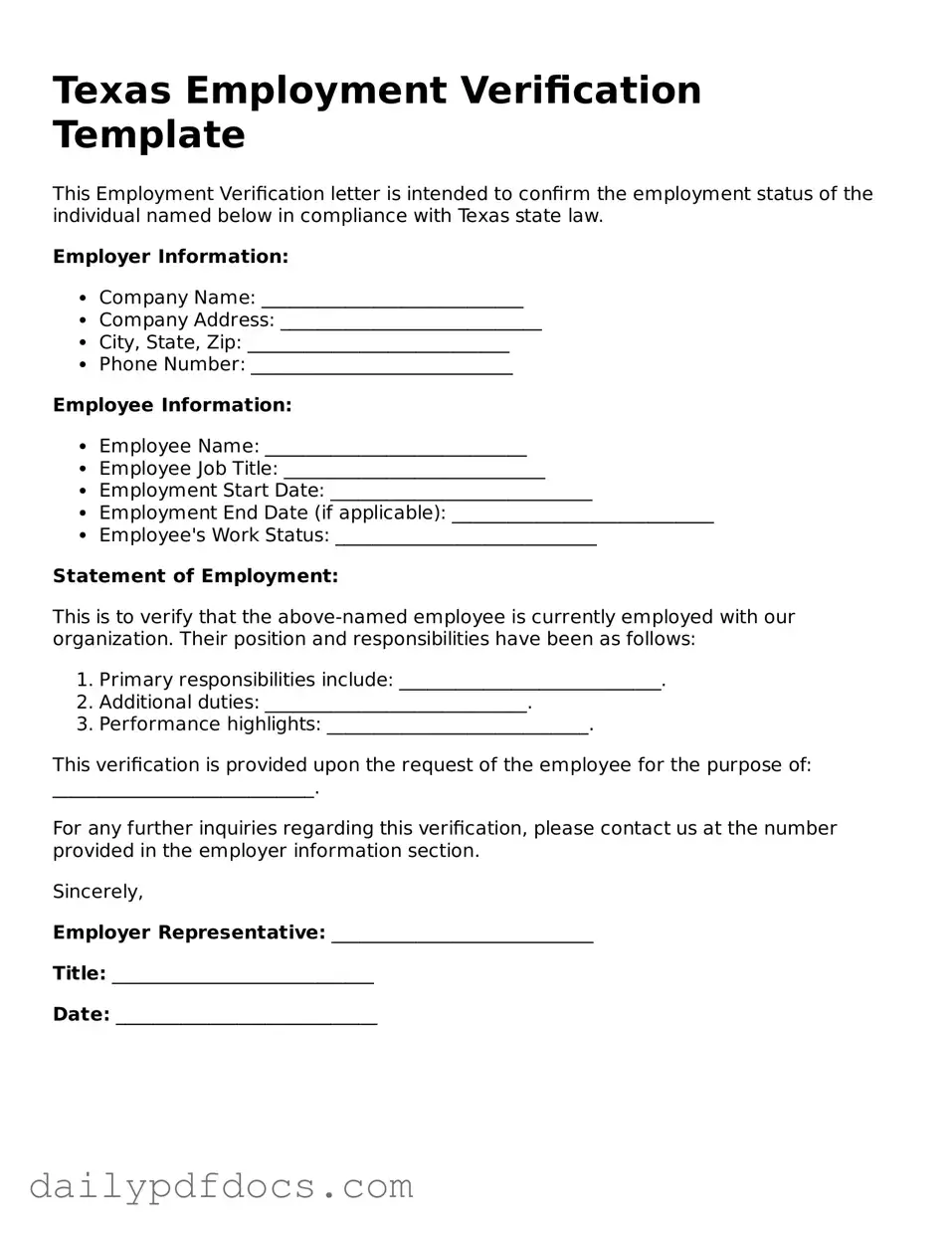Texas Employment Verification Template
This Employment Verification letter is intended to confirm the employment status of the individual named below in compliance with Texas state law.
Employer Information:
- Company Name: ____________________________
- Company Address: ____________________________
- City, State, Zip: ____________________________
- Phone Number: ____________________________
Employee Information:
- Employee Name: ____________________________
- Employee Job Title: ____________________________
- Employment Start Date: ____________________________
- Employment End Date (if applicable): ____________________________
- Employee's Work Status: ____________________________
Statement of Employment:
This is to verify that the above-named employee is currently employed with our organization. Their position and responsibilities have been as follows:
- Primary responsibilities include: ____________________________.
- Additional duties: ____________________________.
- Performance highlights: ____________________________.
This verification is provided upon the request of the employee for the purpose of: ____________________________.
For any further inquiries regarding this verification, please contact us at the number provided in the employer information section.
Sincerely,
Employer Representative: ____________________________
Title: ____________________________
Date: ____________________________
